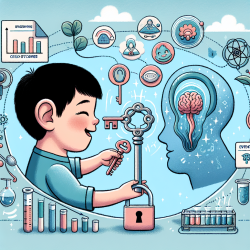Introduction
In the ever-evolving field of speech-language pathology, staying abreast of cutting-edge research and methodologies is crucial for practitioners striving to deliver the best outcomes for children. One such area of interest is the concept of topic resonance, as explored in the research article "Latent topics resonance in scientific literature and commentaries: evidences from natural language processing approach" by Wang et al. This study delves into how topic resonance can be leveraged to enhance understanding and communication, particularly in educational settings.
Understanding Topic Resonance
Topic resonance refers to the phenomenon where certain topics in a discourse resonate more with the reader or listener, influencing their understanding and retention of information. The study by Wang et al. utilizes a natural language processing approach to analyze topic resonance, revealing that topics in academic commentaries often resonate with the reader's prior knowledge and the original paper's themes. This resonance can be predicted and quantified, offering valuable insights for practitioners.
Implications for Speech-Language Pathology
For speech-language pathologists, understanding and applying the principles of topic resonance can significantly enhance therapy outcomes. Here are some practical ways to implement these findings:
- Tailored Interventions: By identifying topics that resonate with children, therapists can tailor interventions to align with these interests, thereby increasing engagement and efficacy.
- Enhanced Communication: Understanding topic resonance can aid in developing communication strategies that align with a child's existing knowledge base, facilitating better comprehension and expression.
- Evidence-Based Practice: Incorporating topic resonance into practice supports evidence-based decision-making, ensuring interventions are grounded in research and tailored to individual needs.
Encouraging Further Research
While the study provides a foundational understanding of topic resonance, there is ample room for further exploration. Practitioners are encouraged to delve deeper into this area, investigating how topic resonance can be applied across different populations and settings. By contributing to this growing body of research, speech-language pathologists can help refine and expand methodologies that benefit children.
Conclusion
Incorporating topic resonance into speech-language pathology practice offers a promising avenue for enhancing therapeutic outcomes. By aligning interventions with topics that naturally resonate with children, practitioners can foster more effective communication and learning. As we continue to explore this concept, the potential for innovation and improvement in therapy practices is immense.
To read the original research paper, please follow this link: Latent topics resonance in scientific literature and commentaries: evidences from natural language processing approach.










